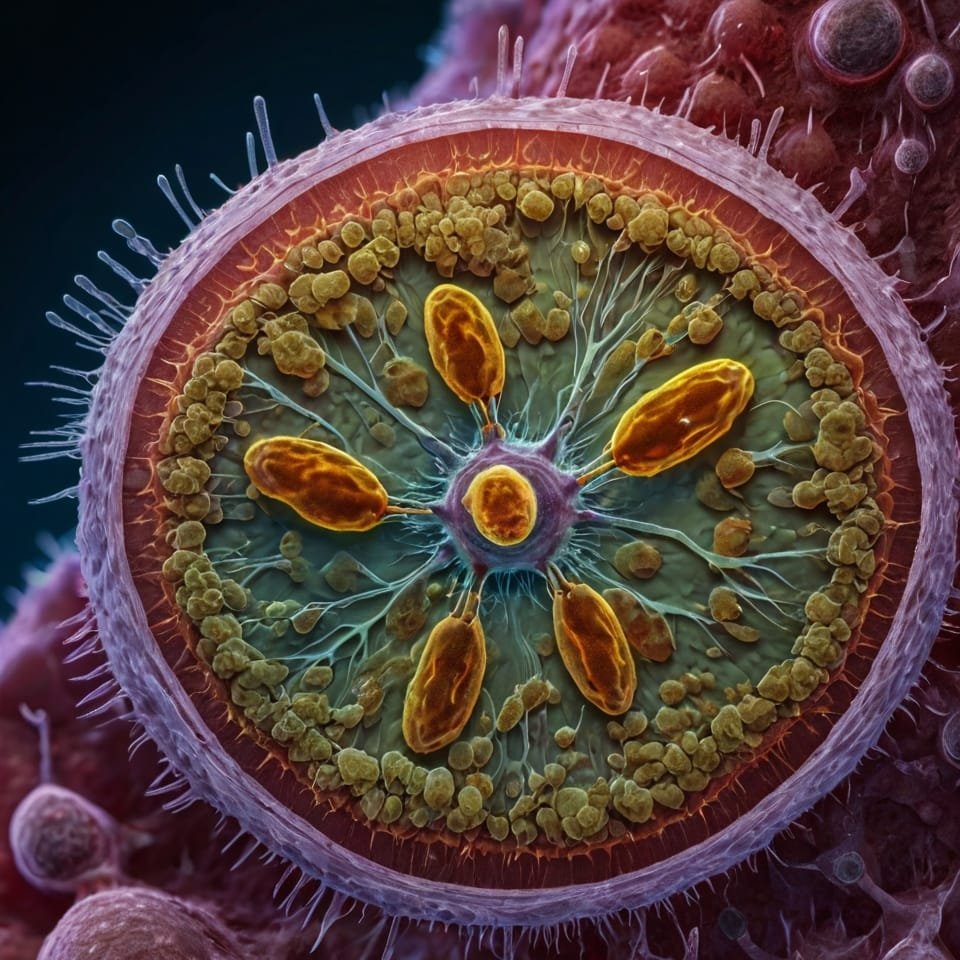
Pneumocystis jiroveci is a fungal organism that can cause severe pneumonia in individuals with weakened immune systems, such as those with HIV/AIDS or undergoing immunosuppressive therapy. This opportunistic pathogen is commonly found in the lungs of healthy individuals but can lead to life-threatening infections in immunocompromised individuals. Symptoms of Pneumocystis jiroveci pneumonia include cough, shortness of breath, and fever. Diagnosis is typically made through a combination of chest imaging and laboratory testing of respiratory samples. Treatment involves a combination of antibiotics and antifungal medications to help clear the infection and support the immune system. Early detection and appropriate management are crucial in preventing serious complications of Pneumocystis jiroveci pneumonia. Without prompt treatment, Pneumocystis jiroveci pneumonia can progress rapidly and cause severe respiratory distress. In severe cases, patients may require hospitalization and respiratory support to ensure adequate oxygenation. It is important for individuals with weakened immune systems, such as those with HIV/AIDS or undergoing chemotherapy, to be vigilant about monitoring for symptoms of this opportunistic infection. By staying informed and seeking timely medical intervention, the prognosis for Pneumocystis jiroveci pneumonia can be greatly improved.
Through this article, you’ll be able to answer the following questions:
- What is Pneumocystis jiroveci infection?
- What is the stain for Pneumocystis jiroveci?
- Is Pneumocystis gram positive or negative?
- Is Pneumocystis jiroveci an opportunistic disease?
- What is another name for Pneumocystis jiroveci pneumonia?
- What is the common name for Pneumocystis jiroveci?
- What is the first line treatment for pneumocystis jiroveci pneumonia?
- How do you diagnose pneumocystis jiroveci pneumonia?
- Why is it called Pneumocystis?
- What is the marker for pneumocystis pneumonia?
- What is the life cycle of a Pneumocystis?
- Can Pneumocystis jiroveci be cultured in the laboratory?
P. jiroveci is a prevalent disease found in the United States, Asia, and Europe. It is transmitted through pulmonary droplets through direct contact, with immunosuppressed patients, particularly those with AIDS, and children, including malnourished infants and those with predisposing conditions, being the most at risk. P. jiroveci can also pass through the placenta, causing fetal infection and stillbirth.
Carlos Justiniano Rubeiro Chagas, MD, a physician in rural Brazil, discovered that the recent seasonal mortality rate was not entirely due to malaria. Instead, he observed that the vinchuca bug (reduvid) had trypanosomes in their gut tract and made the association between the bugs and infection in people. He later described the clinical features of American trypanosomiasis, named Trypanosoma cruzi after his friend and mentor, Oswaldo Cruz. Chagas also discovered Pneumocystis carinii, now referred to as Pneumocystis jiroveci and classified as fungi because the taxonomic status of P.carinii is uncertain, but its chromosomal and mitochondrial genes suggest a closer relationship to fungi than protozoa.
Pneumocystis jiroveci Classification
| Phylum | CLASS | EXAMPLES OF SPECIES |
| Ascomycota | Pneumocystidomycetes | Pneumocystis jirovecii |
Pneumocystis jiroveci, previously known as Pneumocystis carinii, is now a fungus with unique morphological and biologic characteristics, making it a valuable addition to the category of miscellaneous protozoal parasites.
Morphology
P. jiroveci Trophozoites Overview
- Commonly seen single organism.
- Pleomorphic, Simple ovoid and amoeboid.
- Measuring 2 to 4 µm.
- Single nucleus.
P. jiroveci Cysts Overview
- Contain four to eight intracystic bodies, also known as nuclei or trophozoites.
- Nuclei can be organized or unorganized.
- Cysts are roundish, ranging in diameter from 4 to 12 µm.

P. jiroveci Life Cycle
- P. jiroveci is typically a commensal in the lung, spread by respiratory droplets
- Unknown life cycle, trophozoite or cyst presumed to reside in alveolar spaces in lung tissue
- Mature cysts rupture, producing trophozoites that convert into pre-cysts and cysts.
- Cycle repeats in other sites like spleen, lung, lymph nodes, and bone marrow.

Clinical Disease (Signs and symptoms)
Pneumocystosis: Atypical Interstitial Plasma Cell Pneumonia
- Symptoms include nonproductive cough, fever, rapid respirations, and cyanosis in immunosuppressed adults and children.
- Leads to Kaposi’s sarcoma in AIDS patients.
- Infected infants experience poor feeding, energy loss, rapid respiration, and cyanosis.
- Onset is longer, lasting several weeks.
- Typically shows an infiltrate on chest x-ray.
- Breathing difficulties may result in low PO2 and PCO2 tension.
- Prognosis is poor due to poor oxygen and CO2 exchange in the lungs.
P. jiroveci Diagnosis Techniques
- Histologic procedures, particularly Diff-Quik, Giemsa, Grocott-Gomori methenamine silver (GMS), and Calcofluor white stains are commonly used.
- Serologic techniques have been developed but are not yet suitable for clinical diagnosis.
- Monoclonal immunofluorescent stain aids in organ identification.
- Specimens for P. jiroveci examination include sputum, bronchoalveolar lavage, tracheal aspirate, bronchial brushings, and lung tissue.
P. jiroveci Infection Treatments
- Trimethoprim-sulfamethoxazole (Bactrim) as first line.
- Alternatives: Pentamidine isethionate, cotrimoxazole.
Prevention and Control of P. jiroveci Infection
Pneumocystis’ uncertain life cycle makes implementing prevention and control measures challenging. However, personal protection from direct person-to-person contact through pulmonary droplets is crucial for preventing and controlling infection spread. Wearing protective gear, such as masks, around known infected persons may be one such measure.
Conclusion
In conclusion, Pneumocystis jiroveci infection is a serious opportunistic infection primarily affecting immunocompromised individuals. Understanding its epidemiology, morphology, lifecycle, signs and symptoms, mode of transmission, diagnosis, treatment, prevention, and control is crucial to effectively managing and preventing the spread of this potentially life-threatening infection. Public health efforts should focus on early detection, prompt treatment, and implementing preventive measures such as prophylaxis in high-risk populations to reduce the burden of P. jiroveci infection.
Reference:
Elizabeth A. Gockel-Blessing (formerly Zeibig), Clinical Parasitology: A PRACTICAL APPROACH. Second Edition. P.184 CHAPTER 7 Miscellaneous Protozoa







